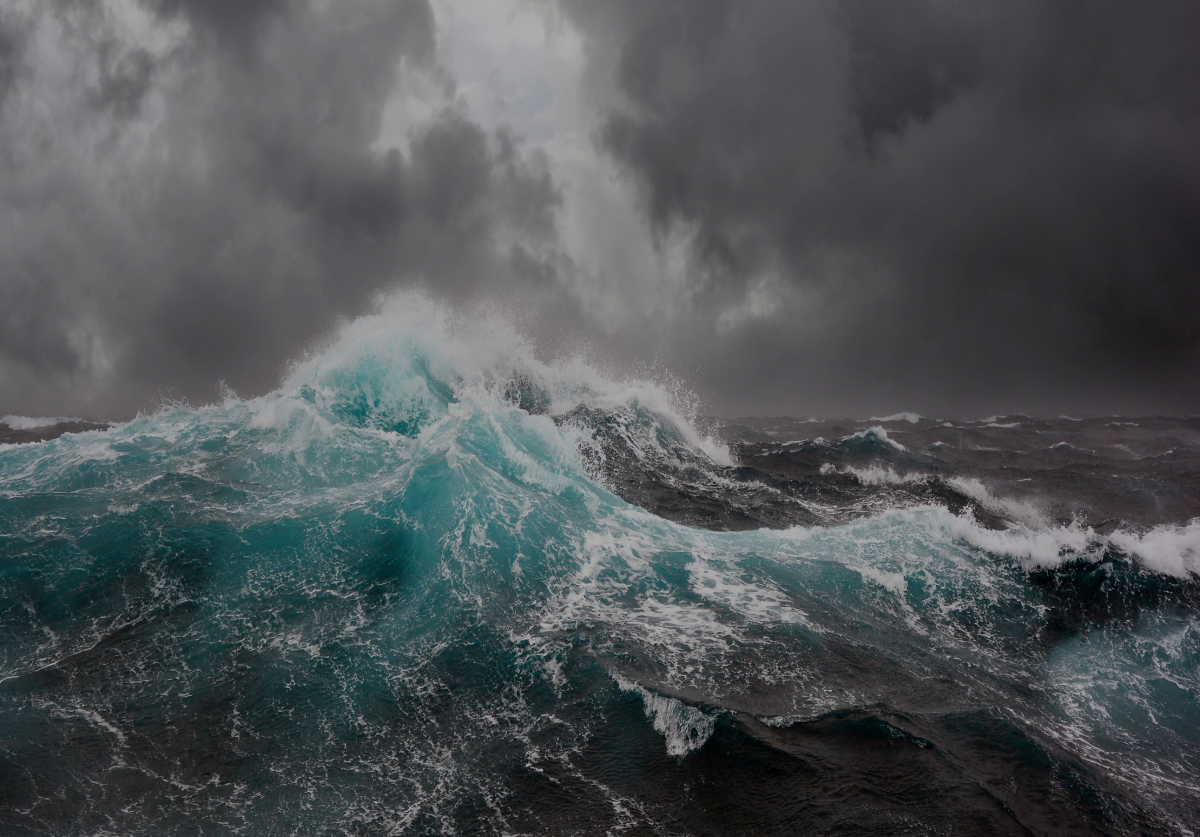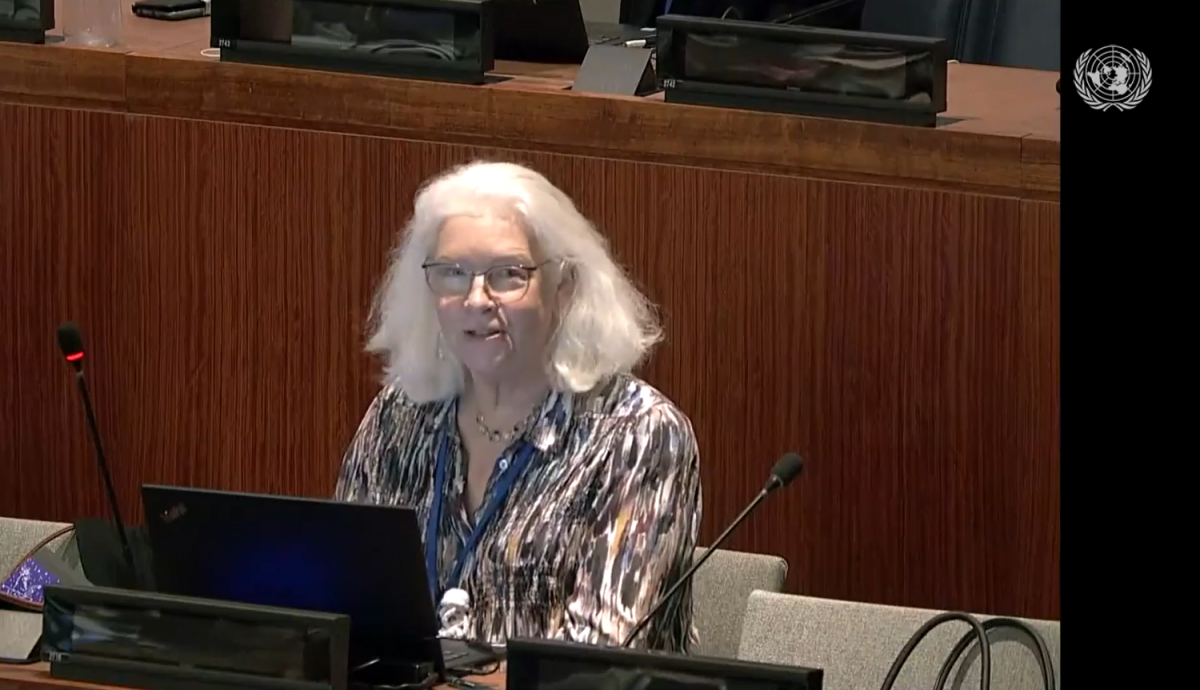IUCN closing statement to UN IGC4 on Biodiversity Beyond National Jurisdiction agreement
IUCN believes that now is the time to be bold, visionary and pragmatic for the benefit of humankind and the ocean.
The Summary of the IPCC WGII Sixth Assessment Report cautions that we have a “brief and rapidly closing window of opportunity to secure a liveable and sustainable future for all.” That statement applies equally to the high seas. It is now critical for the global community to come together to adopt a bold, visionary, and pragmatic BBNJ treaty. This is a key foundation for safeguarding the ocean and humanity’s ability to respond and adapt to climate change.
New York, 18 March 2022: Closing Statement
The Summary of the IPCC WGII Sixth Assessment Report cautions that we have a “brief and rapidly closing window of opportunity to secure a liveable and sustainable future for all.” That statement applies equally to the high seas. It is now critical for the global community to come together to adopt a bold, visionary, and pragmatic BBNJ treaty.[1] This is a key foundation for safeguarding the ocean and humanity’s ability to respond and adapt to climate change.
Be Bold
Adopt ambitious goals and objectives focused on securing ocean health, productivity and resilience for the benefit of humankind and the ocean.
Be Visionary
Manage the global ocean as a shared commons based on principles of equity, informed decision-making, shared responsibility, and accountability.
Be Pragmatic
Adopt systematic, strategic and collaborative processes to identify common interests and avoid competition while building nimble institutions ready to manage the challenges of a rapidly changing ocean.
IUCN would like to express its appreciation for the extraordinary efforts deployed in convening this fourth Intergovernmental Conference (IGC4), in spite of challenging circumstances. We particularly wish to congratulate the President, Facilitators, Secretariat (DOALOS), delegates, and observers on the conclusion of two intense weeks of negotiations. IUCN is grateful that civil society was eventually able to attend in person, and thanks the many involved for their efforts to open the doors to this important process.
Whilst recognizing the significant progress made, we cannot be complacent about the outcome of the meeting for several reasons:
Urgency to finalize in 2022: As we were unable to finish our work during IGC4, a final IGC at the earliest possible date in 2022 is vital. IUCN encourages the President to prepare a clean text of the draft BBNJ Agreement that is bold, visionary and pragmatic, in time for further intersessional consultation prior to the final IGC. IGC5 will ideally be scheduled in August, 2022. IUCN notes that this timing is consistent with the BBNJ High Ambition Coalition’s Declaration and the IUCN WCC Resolution 128, both of which urge States to conclude negotiations in 2022.[2]
Enabling the Conference of the Parties (COP) to create effective MPAs: IUCN welcomes increasing recognition of the role of the COP in adopting area-based management tools (ABMTs) where there is no competent international framework or body (IFB). Nevertheless, a high ambition agreement would enable the COP to adopt proactive conservation measures for marine protected areas (MPAs), a substantial percentage of which are highly and fully protected, and other ABMTs, even where there are other bodies. The shared responsibility of all States under UNCLOS to protect and preserve the marine environment requires clear modalities for State Parties to act directly as well as through competent IFBs to which they are parties.
Bringing transparency and consultation to activities with effect in ABNJ: If assessments are conducted entirely outside the Agreement, as some have suggested, we risk repeating the fragmentation that this Agreement was intended to overcome. It will be important for activities affecting biodiversity in ABNJ to be assessed according to common, high standards. We also encourage States to come to a common understanding of Strategic Environmental Assessment (SEAs). Proactive SEAs can build a shared knowledge base to develop cross-sectoral plans for conserving biodiversity and balancing human uses of marine ABNJ.
While stating the above IUCN notes that an emerging appreciation of this Agreement as a platform for rigorous, integrated, independent, science-based assessment, management, and monitoring of the individual and cumulative effects of human activities and climate change on marine biological diversity in ABNJ is heartening.
Equity as an enabling condition for unlocking ocean benefits for all: IUCN welcomes the increasing recognition of an obligation to share benefits of marine genetic resources in a fair and equitable manner. However, discussions on key provisions for sharing such benefits, valuing the contribution of traditional knowledge, enabling needs-based capacity development, and transferring of technologies still fall short of what is needed to advance conservation and support sustainable and equitable use by all in ABNJ.
Effective financial support as the linchpin of progress: Despite some progress on defining the potential role of existing mechanisms such as the Global Environment Facility, further exploration and support for an appropriate financing architecture is essential. A robust, equitable, flexible and multipronged mechanism for financing implementation requires proper modalities such as a Standing Committee on Finance as well as diverse and reliable resources. The cost of inaction would far exceed the costs of establishing such a mechanism.
Strengthening and not undermining existing bodies: IUCN welcomes and values the contributions of existing IFBs in conserving and sustainably using marine biodiversity in ABNJ. At the same time, it is necessary to recognize the constraints of individual organizations in advancing integrated ecosystem-based management or addressing cumulative effects. Only an empowered and future-looking BBNJ Agreement can provide the global platform necessary to overcome geospatial boundaries, limited timeframes, competing mandates and taxonomic limitations. This approach can reconcile the current patchwork in a seamless manner and further strengthen global cooperation.
As the BBNJ negotiations enter their final phase, IUCN looks to the future with hope for:
Fostering engagement: Whilst recognizing the challenges imposed by the COVID-19 pandemic, the global ocean and its biodiversity are a matter of universal concern. As such, civil society, the scientific community, indigenous peoples and local communities, and the broader public should have every opportunity to participate and contribute to this process. We hope that IGC5 can take place with the full and effective participation of civil society so that negotiations can benefit from their full knowledge and wisdom as has historically been the case.
Marine science: In the time of rising climatic multi-stressors and biodiversity loss, IUCN welcomes the recognition of the importance of science and traditional knowledge to inform decision making. International support for science and FAIR[i] data will be vital to enable timely responses to the increasing pressures of climate change on marine biodiversity in ABNJ. IUCN suggests that the United Nations Decade of Ocean Science for Sustainable Development be appropriately resourced, including by the global BBNJ community, to serve as a framework to develop a science program to increase biodiversity knowledge and understanding of ABNJ.
In closing, we offer our continued support during the intersessional period, and we look forward to working with you to implement the BBNJ Treaty. Since the beginning of the BBNJ process, IUCN has worked with legal experts, scientists, civil society and other stakeholders from around the world to bring in legal expertise and best practices in conservation and scientific research to inform the developing BBNJ Agreement. A selection of resources is available at a dedicated IUCN BBNJ IGC4 webpage:[3]
[1] Gjerde, K., Payne, C., Freestone, D., Pasquero, J., Ortuno Crespo, G., Epps, M., Chazot, C. and Spadone, A. (Editors). 2022. Area-Based Management Tools in Marine Areas Beyond National Jurisdiction, A Report of the IUCN Workshop 7-8 December 2021, https://www.iucn.org/sites/dev/files/content/documents/iucn_abmt_2021_-_report.pdf
[2] BBNJ High Ambition Declaration: https://ec.europa.eu/oceans-and-fisheries/ocean/international-ocean-governance/protecting-ocean-time-action_en;
IUCN WCC Resolution 128 (2021) WCC_2020_RES_128_EN.pdf (iucn.org)
[3] https://www.iucn.org/theme/marine-and-polar/our-work/international-ocean-governance/unclos/bbnj-igc4.
[i] FAIR Principles - GO FAIR (go-fair.org)





